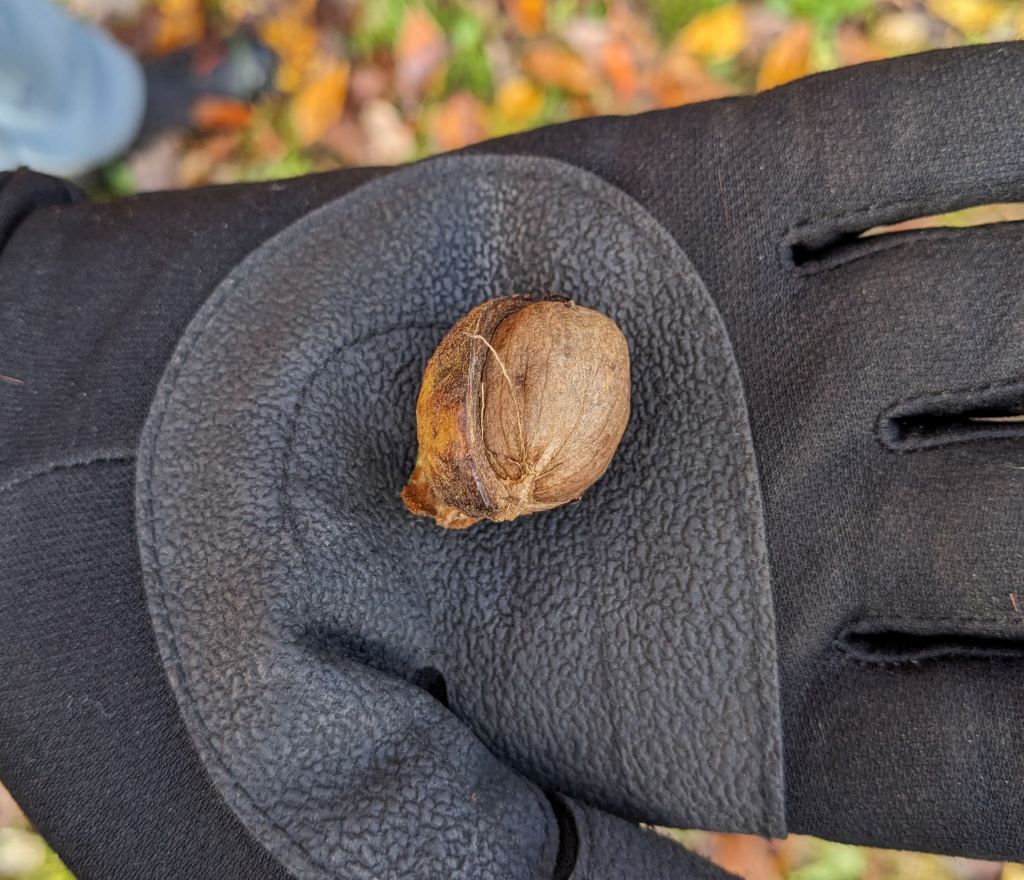
15 November 2023
The Nutty Series: Pignut hickory
Different species of hickory nuts look the same … but not quite. This one, partially in its husk, was a puzzle so I brought it home. Husks and shells together provide the clues so I had three nuts to work with in various stages of undress, plus a table of southwestern PA hickory husk and shell characteristics.
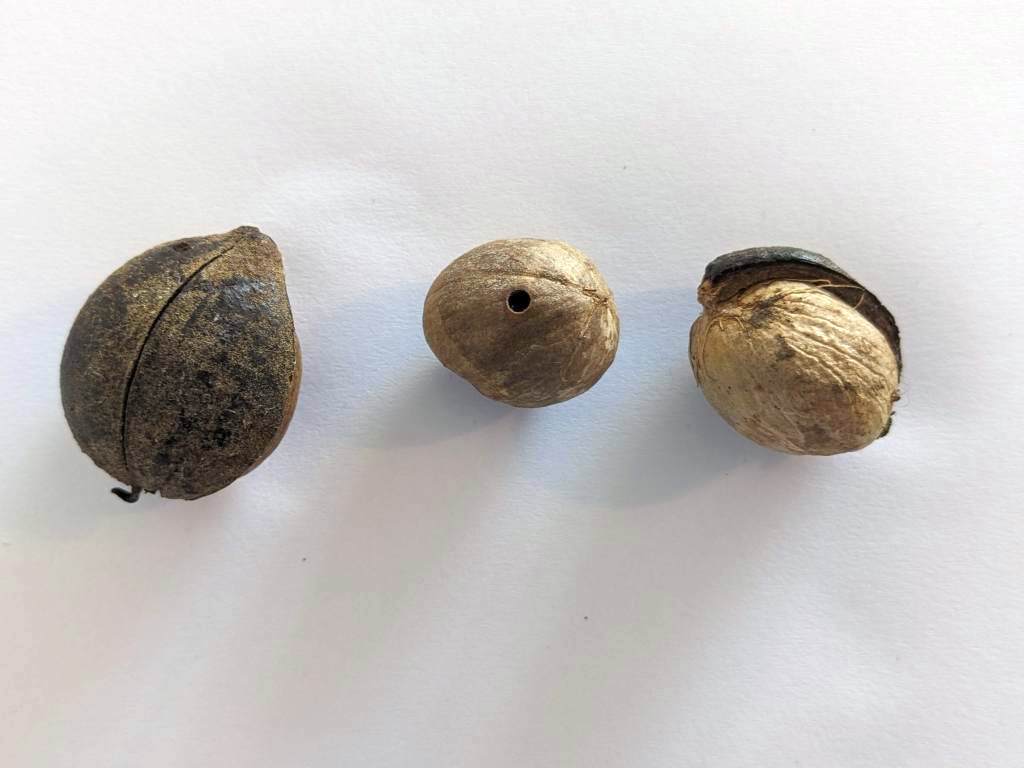
Characteristics of Southwestern PA Hickory Husks and Shells
| Common Name | Scientific name | ||
|---|---|---|---|
| Shagbark Hickory | Carya ovata | Nearly round, 1.75", thick, green, splits to base | Nut has 4 ribs |
| Mockernut hickory | Carya tomentosa | Oval to pear shaped, 1.75", green, husk is thinner than shagbark's, splits to base | Nut is thick-shelled with 4 ribs |
| Pignut hickory | Carya glabra | Oval or slightly pear shaped, 1.5", thin husk green to tan, maturing to da rk brown, usually splits only partway to base | Nut has no ribs |
| Bitternut hickory | Carya cordiformis | Very thin rough husk with 4 wings, splits only to the middle as if it is peeling off the shell | Nut is round, small and thin-shelled with a pointed tip |
The Verdict: The photo was taken after the nuts sat indoors for three weeks. The husk is still pear shaped but has turned brown and splits completely. Hmmm. The nut, however, has no ribs so I’d say this is a pignut.
Sliced open it would look like this. I lack the tools to make such a clean cut.
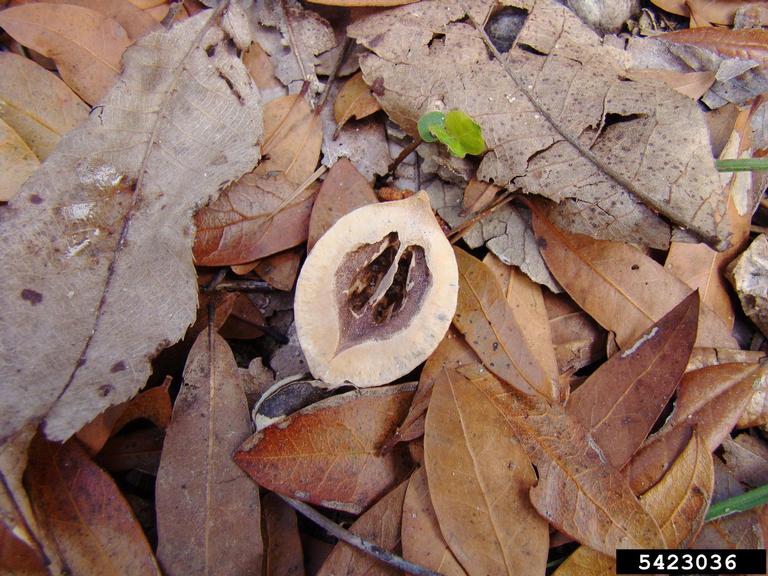
Pignuts were too bitter for European settlers so they fed them to their pigs, hence the pignut name. However pignuts are prized by wildlife including chipmunks, squirrels, mice, blue jays, red-bellied woodpeckers and wild turkeys. If deer eat them they will soon disappear from the ground in Pittsburgh’s parks.
Pignut hickories (Carya glabra) range along the east coast (the original colonies) all the way to the Mississippi Valley and down to the Gulf of Mexico but don’t normally grow in northern Pennsylvania.
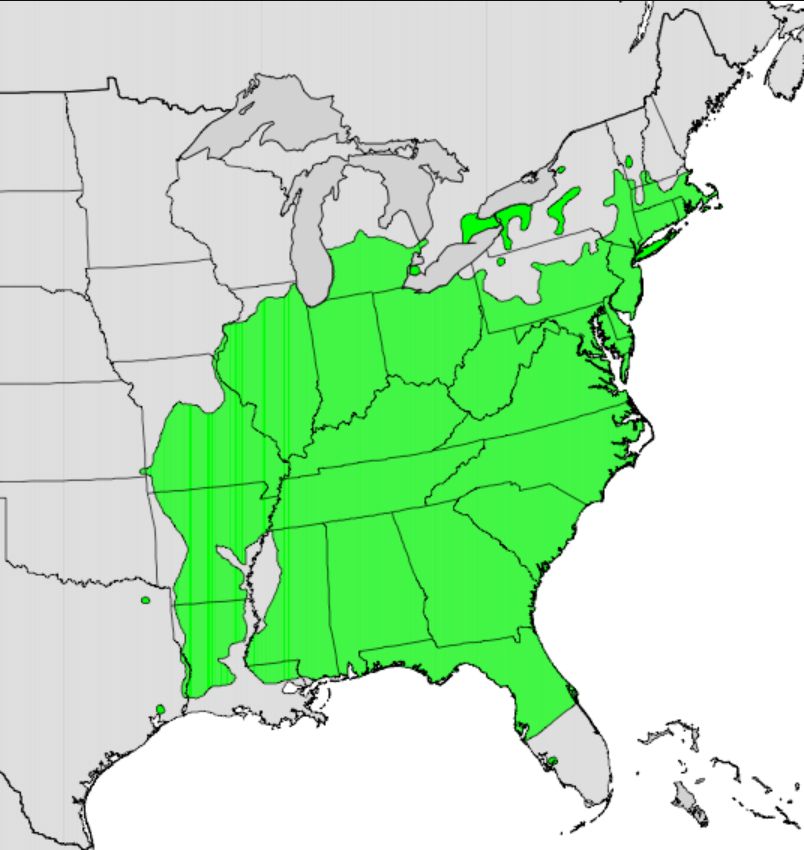
In winter they are best identified by their buds. As with all hickories, the end bud is larger than the side buds but on the pignut it is relatively small and the side buds are almost at right angles to the twig. This one is about to burst into spring leaves.
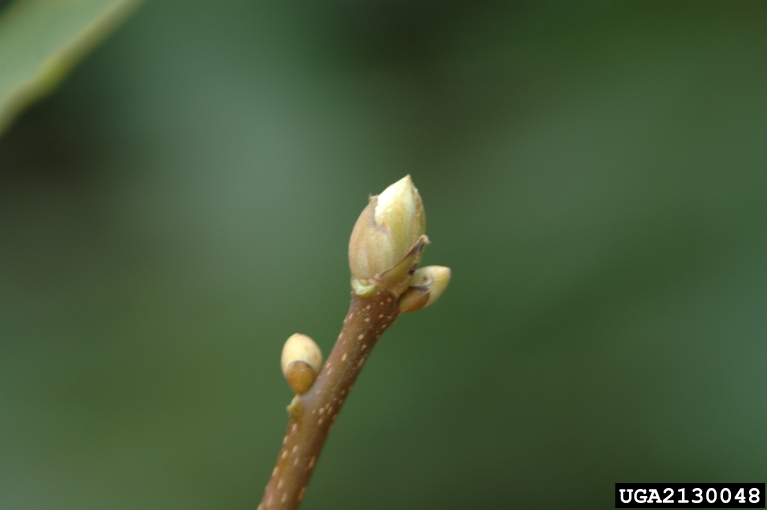
Young trees have smooth bark. Mature ones have these ridges.
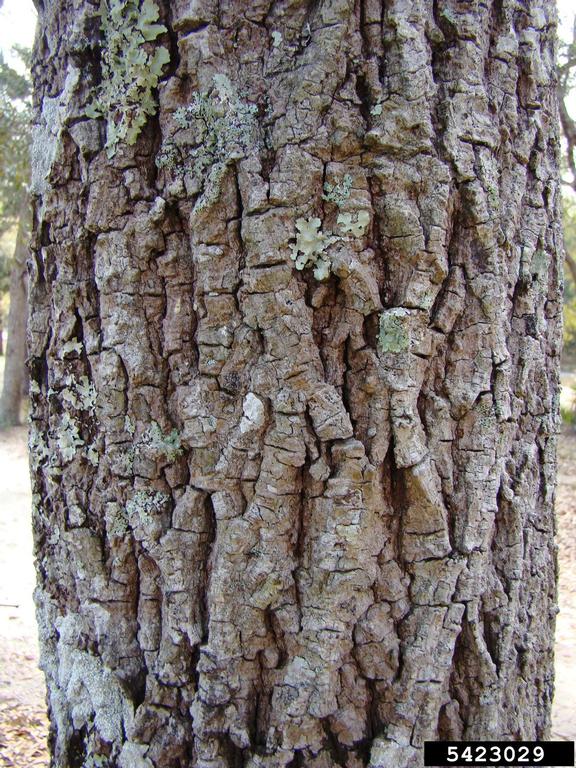
The tree’s compound leaves have 5-7 serrated leaflets …
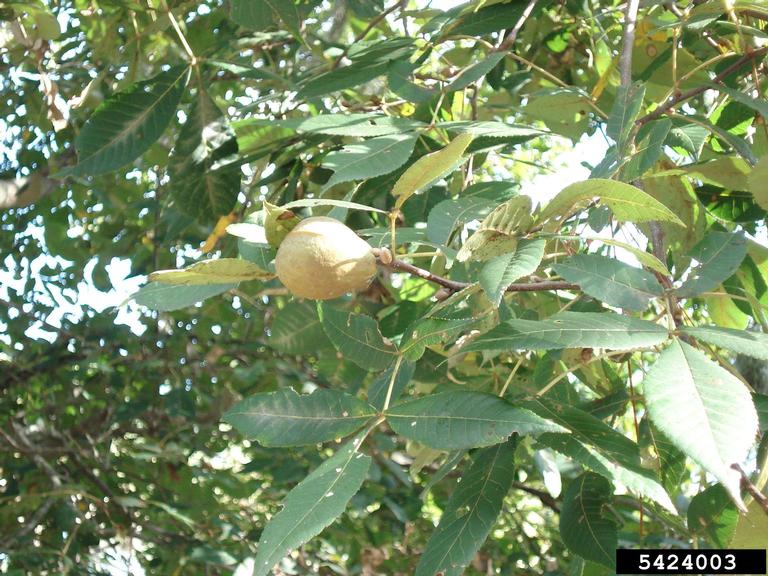
… which turn a beautiful golden color in the fall.
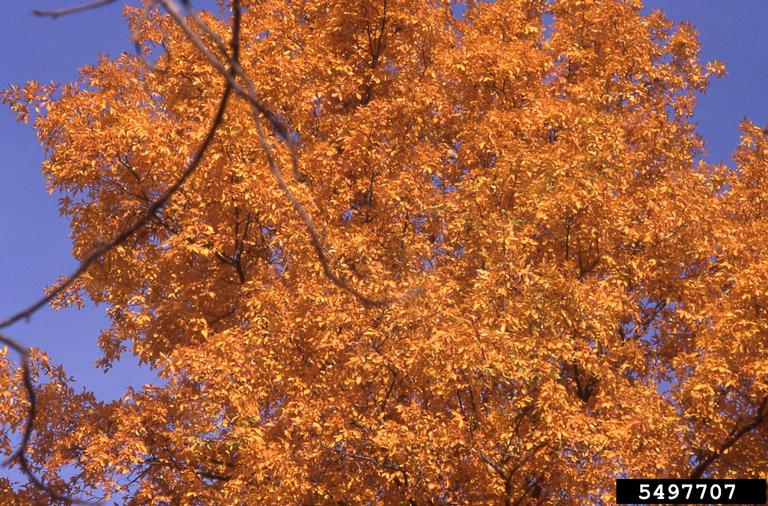
But now the trees are bare.
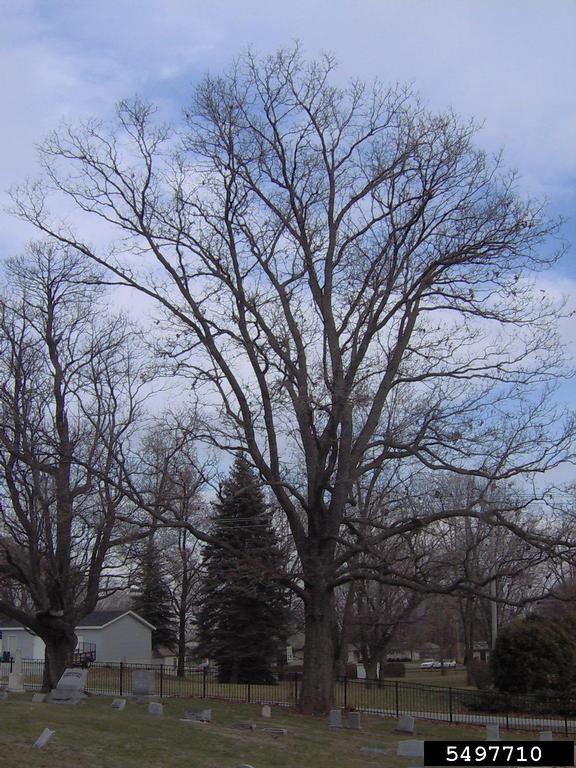
Bonus! Did you notice the clean hole in the center nut in my three-nut photo? It was probably made by a pecan weevil (Curculio caryae). The weevil drills a hole to lay its eggs inside developing hickory nuts, including pecans.
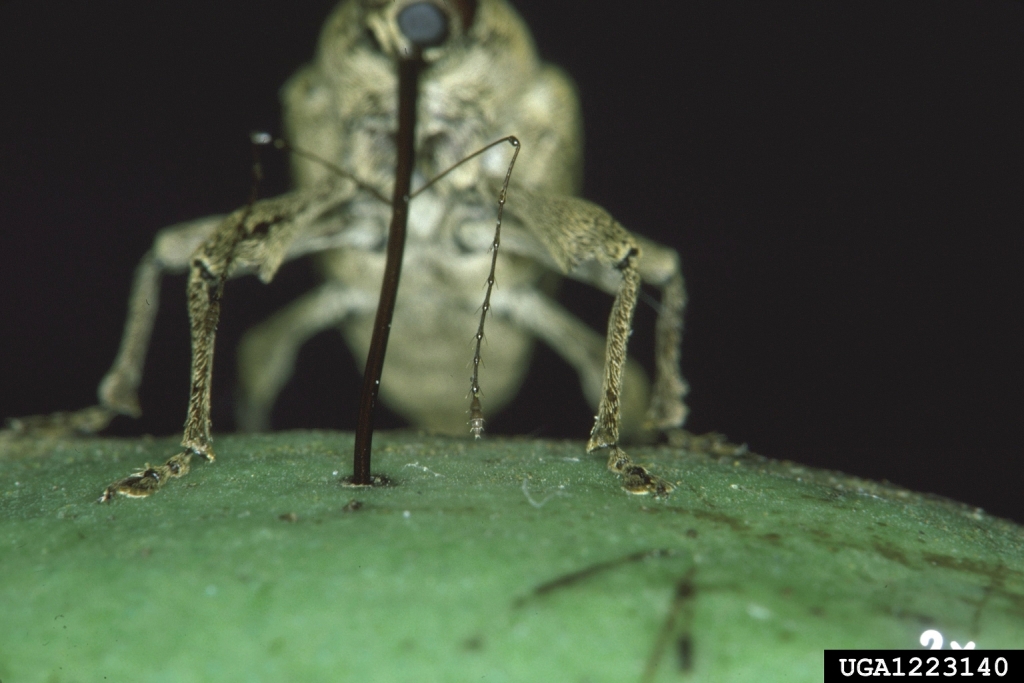
How does she drill into the nuts? Check out this video of acorn weevils drilling and mating.
Read more about pignuts at the Glen Arboretum.
(credits are in the captions)
When my daughter was young, we were walking in the woods with some friends, and there was a half a nut shell pressed into the ground cut side up so that it looked kind of like the end of a pig’s snout, and one of our friends told my daughter that it was a pig hibernating underground, and he left his nose exposed so that he could breathe. Not a good way to teach kids about nature 🙂
Is pig nut wood good for smoking meat since it’s a variety of hickory?
Howard, I don’t know. The wood-smoke cooking websites say “hickory” but within that category they are all over the map with opinions.